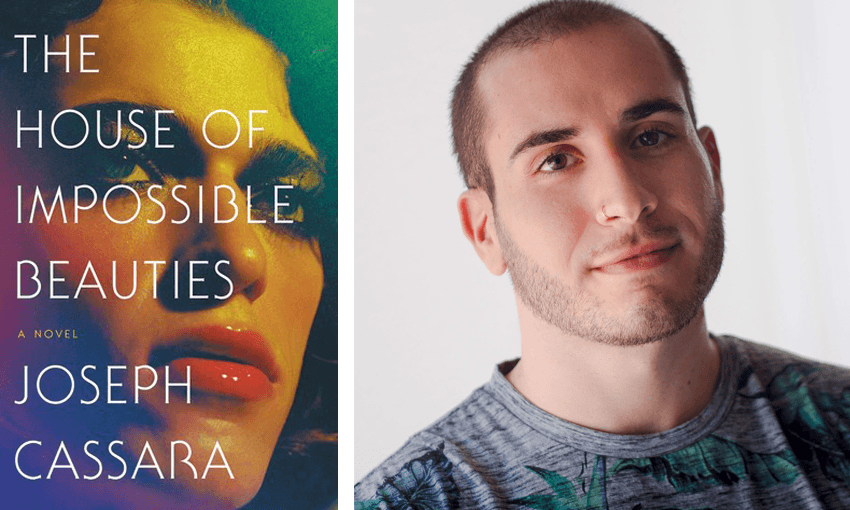Louisa Kasza reviews a bright, expansive novel that follows a cast of gay and transgender club kids navigating the New York drag queen scene of the 1980s.
Joseph Cassara’s novel The House of Impossible Beauties charts the highs and deadly lows of gay life in 1980s New York City. Angel, Venus, Juanito and Daniel are all members of the House of Xtravaganza, one of the close-knit family units formed by performers at the legendary drag balls of the era. Performers from rival houses came together at these balls to promenade in various forms of drag for trophies in categories as diverse as “Butch queen” and “Executive realness”, as portrayed in the legendary documentary Paris is Burning.
The novel tells the multi-generational saga of the Xtravaganza family. The family’s matriarch is Angel, a transgender Puerto Rican woman who finds a reprieve from her dysfunctional family in the company of famous drag queen Dorian and new lover Hector. Angel is the book’s moral centre, providing a replacement family and even a home for displaced drag “children”, and even while she mourns the loss of lovers and friends to AIDS and other horrors, she never relinquishes her inner life, cherishing dreams of modelling Chanel suits in front of the Eiffel Tower for Vogue.
Angel soon recruits Venus, another trans woman, to the House. Fleeing her own family, Venus’s fantasies involve gender-reassignment surgery, falling in love, moving to the suburbs and pleasing a husband with home-cooked dinners. In the meantime, she tries to avoid being swallowed up by New York’s streets as she hustles for a living with Angel. Also added to the flock are Juanito and Daniel: younger, male-presenting gay men, growing up together and falling in love under the shadow of AIDs. In fact, just about everything that happens in The House of Impossible Beauties can be categorised as occurring under the shadow of AIDs, and the book brings that all-pervading fear to life.
But it’s impossible to talk about The House of Impossible Beauties without also talking about Paris is Burning, Jennie Livingston’s 1990 film documenting drag ball culture in 1980s New York. The documentary became a major cultural touchstone not just for the drag and wider queer communities but for intrigued outsiders too. The film’s popular and critical acclaim, and also the controversy it attracted, brings home the bravery – or stupidity – it must have taken to write The House of Impossible Beauties.
A disclaimer from Cassara in the book’s front-matter states that the aim is “to search for poetic and narrative truth”, rather than to recount historical facts. But these people – Angel Xtravaganza, Venus Xtravaganza – were real, with larger-than-life personalities and problems, iconic turns of phrase and pithy explanations of gay life, some of which were captured in Paris is Burning.
In a way that curiously mirrors the recent critical mass reached by reality TV phenomenon RuPaul’s Drag Race, Paris is Burning brought queer culture to the masses by showing drag performance via the safe, mediating presence of a cinema, television or computer screen. And Paris is Burning, like Drag Race, has drawn its share of criticism for its handling of complex issues around gender, race, class, representation, exploitation and who gets to tell what stories.
So it’s a risky move on Cassara’s part to use Paris is Burning as novelistic inspiration. How would these legendary figures, and those who knew and loved them, feel about their lives being fictionalised? We may yet find out – the House is still active and hasn’t always taken kindly to fictionalisations of its members’ lives. But putting aside questions of ethics, representation and even good taste, does the book stand on its own merits, as art and enjoyment?
Some would have it that the intrinsic value of a novel is in its ability to increase empathy through seeing the world from another perspective. In this regard, The House of Impossible Beauties succeeds. The sweetness and sadness are in the details – how a faux-silk polyester scarf or foulard can dress up a non-branded women’s suit for a trip to stare longingly at the Chanel suits in Bloomingdales; and, later in the book, how one might sponge bodily fluid leakages from AIDS-related complications out of one of those very Chanel suits.
And if the purpose of a novel is to entertain as well as illuminate, this book is still in good shape. Angel and her family captivate from the get-go, grabbing the reader by the foulard for a gruelling as well as exhilarating ride.
But then there are moments of overkill, where a thought could have been conveyed by an eloquent white space rather than more words on the page. Cassara’s maximalist style may be out of step with the fashion for all things minimalism, but not all novels deal with purse-lipped heterosexual Anglo-Saxons exchanging finely-crafted monosyllables. Certainly this one doesn’t, and it’s nice to see diversity not just in the ethnicity and sexuality of the characters portrayed, but in the novel’s way of portraying them.
It’s an ambitious novel. It’s expansive. It’s sprawling. It over-reaches, stumbles, entertains; it’s the author’s debut novel, and it shows – for better and for worse.
The House of Impossible Beauties by Joseph Cassara ($27) is available at Unity Books.

